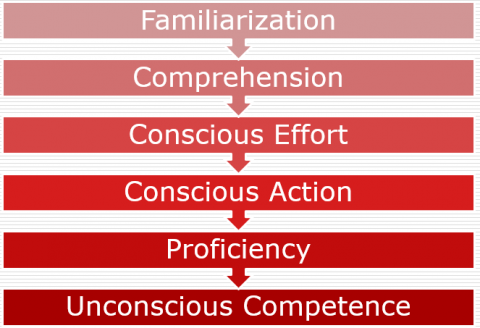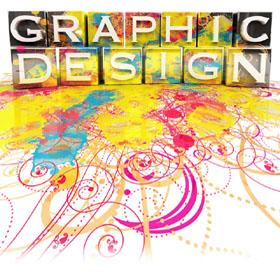Getting Learners What They Need
Sputter, sputter, splat. Silence. Recently, my Keurig painfully ground to a halt as I was making my morning coffee. How unfair to expect me to deal with this before caffeine! My first response? Post its obituary on Facebook. Within 30 minutes I had all kinds of advice and a link to a video that showed me how could get it going again. If I’d been more awake, or perhaps hadn’t determined that my coffee maker was dead, I might have hopped onto Google or searched YouTube for a way to fix it.
When we are solving a problem, this is how we operate in the real world.
Why then, do we make training so complicated? In my coffee dilemma, I didn’t go fishing around for the user manual, though it might have contained an answer to what I needed. I needed a quick answer to solve a problem. As learning designers, we need to think more about the learners’ problem and build a solution to support the end-state performance. Unfortunately, our stakeholders generally want to provide them everything they could possibly ever need to know in the training. In this article, we will consider what the user really needs to do his or her job.
It’s About Performance
We live in an information laden world, with ready answers at our fingertips.Training is created to introduce a new concept to learners or to build new skills. As learning designers, we need to begin with defining our goal: In the end, what does the learner need to know and do ? Coming to a single sentence focal point defines the main idea of the course and provides a targeted goal that enables us to cut through the clutter of extraneous information and provide just enough to enable specific knowing and doing. The “know and do sentence” delineates the actual learning need.
What is the Learning Need?
Conrad Gottfredson and Bob Mosher have identified five moments of learning need1:
- When people are learning how to do something for the first time ( New );
- When people are expanding the breadth and depth of what they have learned ( More );
- When they need to act upon what they have learned, which includes planning what they will do, remembering what they may have forgotten, or adapting their performance to a unique situation ( Apply );
- When problems arise, or things break or don’t work the way they were intended ( Solve ); and,
- When people need to learn a new way of doing something, which requires them to change skills that are deeply ingrained in their performance practices ( Change ).
Consider your current learning project. Why has it been initiated? Is it New-More-Apply-Solve or Change? Once we categorize the learning need, we must consider what level of mastery we’re trying to achieve.
How Well Do the Learners Need to Know the Information?
Gloria Gery, known for her work in EPSS (electronic performance support systems) included a proficiency scale in her 1991 work2 that lays out the depth of learning to be achieved in training. The scale begins with familiarization and ends with unconscious competence. Consider your learning. How well do the learners actually need to know or do what you’re training them for? If I’m training CPR for elementary school teachers, I’ll expect a totally different level of competence than I would for an EMT. The teacher would be ok with a conscious effort, thinking through each step while the EMT would need to be proficient to unconscious competence to jump to action without hesitation. Where do your learners need to be on this scale? Do we expect total mastery at the end of training?

When we’re working with content, we need to know what the key things are that we want learners to take away, and work to emphasize and reinforce them. All too often, we expect our learners to recall everything we have provided them. That isn’t realistic. Just because you taught it doesn’t mean they caught it. Some of what is presented will be lost. We know that from the Ebbinhaus Forgetting Curve. It’s important to keep the main thing the main thing, and reinforce it sufficiently to become a keeper for the learner. We may also need to prepare them to know exactly where to get more information in the moment of need, rather than trying to train and retain all of it.
With skill-based learning, we may be showing them how to do something, but they will need to practice to proficiency. It may be a skill that they will only need to use once in a while. In that case, we need to provide them with resources to support them as they step through the process. There are times that our training should make our learners familiar with the content at a high level, then provide them with tools and resources for the moment of need. This is especially important if users won’t have immediate access to the system or a training database. We start them with familiarity and comprehension, then give them the supports to move through the actual tasks when they need to do them. This is performance support.

It’s Like Cooking
I suspect most of you reading this have some experience with cooking. You may have learned your skills by watching someone as you were growing up, or by reading a cookbook, or by viewing a cooking show or YouTube video. Some things, like making scrambled eggs, are easy, and you master them after the first attempt. There are minimal steps, and they are easy to learn and memorize. Other things are more complex, and require a recipe, no matter how often you prepare them. There may be things you only prepare around the holidays, so you don’t store the processes in your head, but pull down the recipe file with Grandma’s cookies in it. Similarly, with our elearning, we may be showing people things, but they will need to practice them to gain proficiency, and may need a job aid or some other tool to prompt them of the steps. We cannot expect our learners to be at the level of unconscious competence when they complete our courses, recalling every fact we mentioned. Yet all too often, we find that our subject matter experts believe that’s what happens and agonize about cramming more and more into the course. We need to determine the main outcomes, focus on delivering them, and keep the main thing the main thing. We return to our mantra: In the end, what do you want your learner to know and do?
The key: As you work to build out your elearning, ask yourself what you are expecting your learners to know and do at the end, and build toward that goal.
Resources – Make Them Accessible
If the task you are training to requires a support tool, by all means, make it readily accessible. If there is a PDF to support your work, you can embed it in the training for the learner to download locally, but there may also be a need to provide a library of tools for learners to access for just-in-time resources. Expecting your learner to remember which course had the tool, locate it in the LMS, re-click through seventeen slides to access it is a recipe for disaster. If we want our learners to use our tools, then we want to keep them handy for easy access. If your learners will be returning to the course to refresh their knowledge or access a tool, make sure they’re allowed to go right to what they want — even helped with menu and search facilities — rather than having to “re-complete” every page, interactivity, and quiz that precedes the sought item within the course.
Recipe for Success
Define the end goal for the learning: What does the learner need to know and do?
Define the moment of learning need: New, More, Apply, Solve, Change
Ask how well the learner needs to know the information or perform the skill
Build your learning with the learner and the learner’s need in mind
Provide readily accessible, supplemental resources, as needed
At Illumina, we’re here to help you build your learning to meet the goals of your business initiative. Call us today, and we’ll help you determine ways to build training that acts like donuts in the break room: that brings learners in, and makes them return, looking for more.
Now let’s go brew some coffee….
References
1Gery, G. (1991). Electronic Performance Support Systems. Tolland, MA: Gery Associates
2Gottfredson, C. and Mosher, B. (2012). Are you meeting all five moments of learning need? Learning Solutions Magazine. Retrieved from https://www.learningsolutionsmag.com/articles/949/




